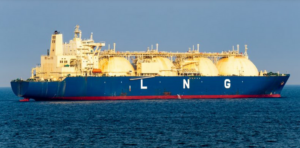The European commitment to phase out Russian natural gas is commendable. But it must be pursued sensibly. Otherwise, Europe could well trigger the very crisis it is trying to avert: very high prices and a physical shortage of gas. Europe should be bold about Russian gas. But it needs a broader set of tools to cut imports.
The European plan to stop gas imports from Russia, REPowerEU, has a supply and a demand dimension. The demand side is robust: more renewables, efficiency, and alternatives for buildings and industry. Ambition can always be higher, but the basic contours fit neatly with the European Green Deal and the ‘Fit for 55’ package to lower greenhouse gas emissions.
The problem is securing access to non-Russian natural gas. Europe wants to build new infrastructure to import liquefied natural gas (LNG), buy gas from exporters like the United States, and coordinate purchases among European firms to avoid unnecessary competition that raises prices.
FT: “Tip of the iceberg” – Rise in Russian spying activity alarms European capitals – Analysis
This is sensible. But the scale of Europe’s intervention is massive. Europe wants an additional 50 billion cubic meters (bcm) of LNG to offset the 155 bcm of Russian gas imported in 2021. The REPowerEU plan sets the 50 bcm targets for both 2022 and 2030. The March 25 statement with the United States referenced this figure too: “The European Commission will work with the EU Member States toward ensuring stable demand for additional US LNG until at least 2030 of approximately 50 bcm/annum.”
Read more: Euractiv
Ask me anything
Explore related questions





